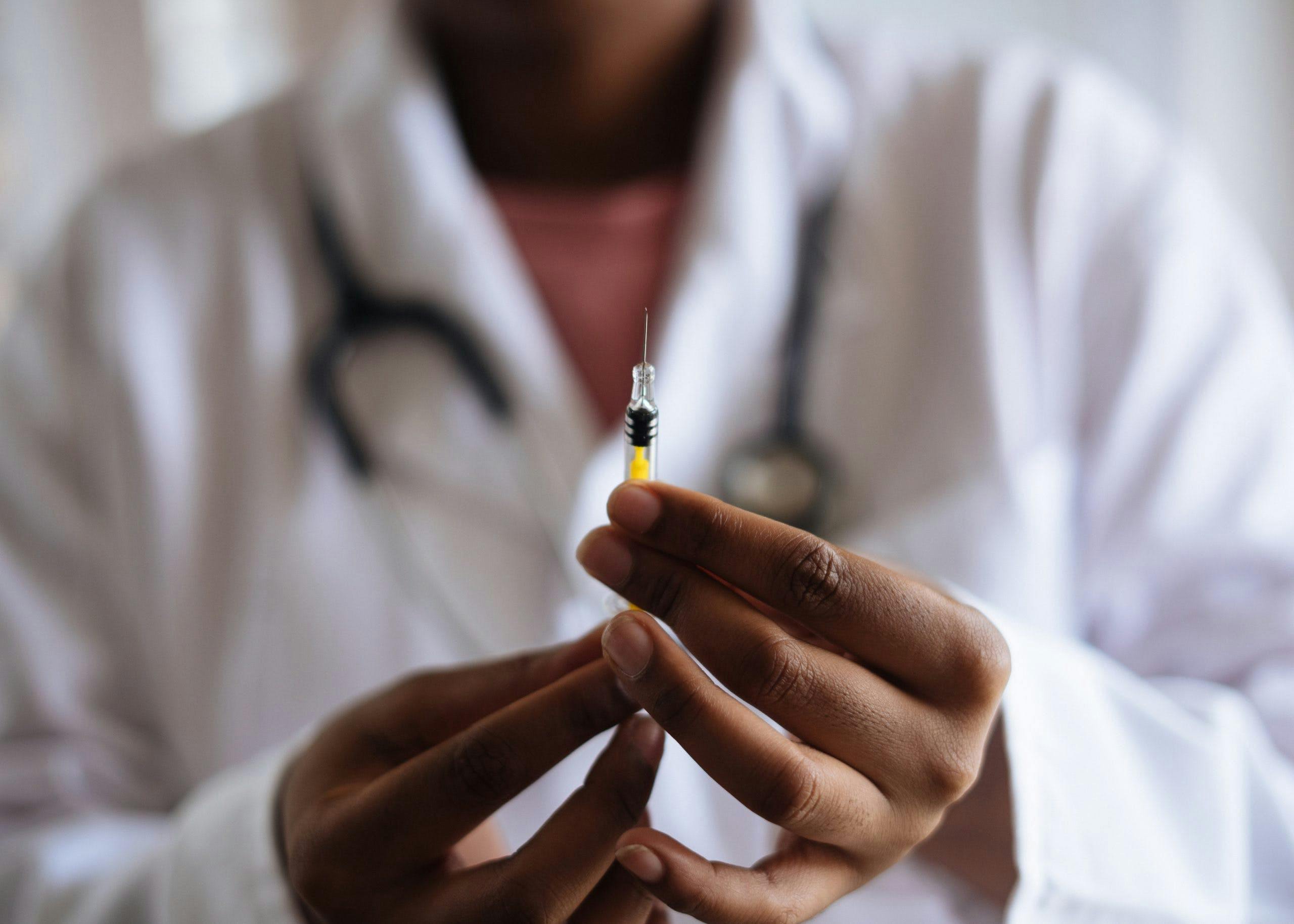A Behavioral Approach to COVID-19 Vaccine Hesitancy
As of early December 2020, three promising COVID-19 vaccine candidates have been announced. Moderna, Pfizer, and AstraZeneca each report a vaccine efficacy rate of 94.5%, at least 90%, and 90%, respectively (although there is some controversy surrounding the clinical data provided by AstraZeneca).1,2,3 This is all just seven months after the U.S. government founded Operation Warp Speed, an initiative to accelerate the testing, supply, development, and distribution of safe and effective COVID-19 vaccines, therapeutics, and diagnostics.4 But despite these breakthroughs, there may still be significant behavioral barriers to ending the pandemic: vaccine hesitancy and the anti-vax movement have many people uneasy about the prospect of a COVID-19 vaccine.
A successful vaccine can be a long-term solution to a pandemic that has already killed hundreds of thousands. However, Operation Warp Speed came with a major blindspot: just because a successful vaccine is available does not mean people will take one. Hence, creating the vaccine is only half the battle. The other half is ensuring that enough of the American public actually gets vaccinated. Understanding how people may react to the vaccine will be essential in guiding policies and campaigns working to increase vaccine uptake.
The anti-vax movement in the U.S.
Recent polls have already shown that Americans are hesitant to accept a COVID-19 vaccine: about one in three Americans do not plan to get vaccinated once an FDA-approved vaccine is available.5,6 These poll results are alarming because insufficient vaccine uptake could result in a failure to reach herd immunity and reduce the overall effectiveness of the vaccine on our nation’s public health. In turn, the pandemic will persist and the country will continue to face great social, economic, and health costs.
The United States already has a history of difficulty with vaccine uptake. For example, let’s take a look at the statistics for the flu shot. In the 2018–2019 flu season, only 45.3% of the US adult population received a flu shot, a vaccination that has been around for several decades. (For perspective, current models suggest that 60–70% of the population would need to be vaccinated in order to contain the spread of COVID-19.)17 This is due in part to lack of awareness and accessibility, but also behavioral challenges. Given the novelty of SARS-CoV-2, we can only anticipate new behavioral factors specific to the current pandemic that will contribute to vaccine hesitancy
Behavioral Science, Democratized
We make 35,000 decisions each day, often in environments that aren’t conducive to making sound choices.
At TDL, we work with organizations in the public and private sectors—from new startups, to governments, to established players like the Gates Foundation—to debias decision-making and create better outcomes for everyone.
Accelerated timelines may increase perceptions of risk
In general, the public already approaches vaccines with uncertainty. The last few years have seen growth in the anti-vaccine (anti-vax) movement, which is strongly associated with conspiracy theories, misinformation, and the desire to protect individual freedoms. The accelerated timeline for development and regulatory approval may lead to an even greater perception of risk among the public towards COVID-19 vaccines. Fueled by suspicion and skepticism, the public may perceive the vaccine to be more experimental than a proven solution.7
In fact, this was the case during the release of the vaccine for the H1N1 pandemic; vaccine uptake was lower due to collective concern regarding the safety of the vaccine.8 It is also not uncommon to hear people express that they would only consider taking the vaccine once a segment of the population has already been vaccinated and shown no negative effects. Interestingly, this thought process also results in somewhat of a classic prisoner’s dilemma; in a hypothetical world where everyone held this belief, nobody would be comfortable with getting vaccinated. While we won’t face such a grave scenario, decreased rates of initial uptake could slow our journey to the threshold for herd immunity and unnecessarily prolong the pandemic.
For these reasons, it is imperative that educational campaigns thoroughly detail the rigorous testing process that vaccines undergo prior to approval. These campaigns should begin far prior to the release of the vaccine so as to facilitate an easier transition and begin increasing trust in the vaccine early on.9
We think of individual health and public health as separate—but they’re not
Campaigns should also focus on the importance of vaccination for both the health of the individual as well as for the health of the general public. This may take the form of emphasizing how every individual plays a role in the health of our society, perhaps similar to “get out the vote” campaigns.
This is especially important because relatively young and healthy people understand that they are not confronted with the same mortality or morbidity if infected with COVID-19, yet will empathize more strongly with a unified goal of ending the pandemic. Earlier this year, I wrote an article discussing how game theory can explain why wearing a mask is in the best interest for everyone even if one incorrectly believes that masks are ineffective.10 A similar discussion can be applied in the context of COVID-19 vaccinations, especially given how contagious the virus is: it is in everyone’s best interest to get vaccinated regardless of their own health status and risk attitudes. After all, we are all negatively affected by the pandemic in one way or another.
We overemphasize the risks of a COVID-19 vaccine
Humans have a tendency to remember emotionally salient information, especially negative events. This is known as pessimism bias, which we have evolved to improve our ability to recognize potential threats. Pessimism bias can heavily skew our perceptions of COVID-19 vaccine safety because we may unconsciously overestimate the likelihood and magnitude of negative consequences associated with vaccination.
Given the large number of vaccines that are currently being developed and researched, it is highly likely that there will be some individuals who experience negative outcomes or side effects.11 With social media and news channels acting as rapid disseminators of information, negative press could quickly cast a shadow of doubt over all vaccines, even those without any evidence of negative side-effects. This is related to the availability heuristic, which describes our tendency to use information that comes to mind quickly and easily when making decisions about the future. Better understanding how people may react to such negative events and the heuristics they might act on can better inform educational campaigns that restore trust in the safety of the vaccine.
Our expectations for the vaccine are too high
Vaccines are often synonymous with immunity among the public. This may lead to unrealistically high expectations for the COVID-19 vaccine (see anchoring bias). People will perhaps expect the vaccine to fully eliminate risk of contracting the virus.
In reality, even a highly effective vaccine will not completely eradicate the virus; some who are vaccinated will still end up catching it. Moreover, the durability of current vaccine candidates is yet to be fully understood—we do not know how long immunity from vaccination will last.12 People are likely to be disappointed, and possibly feel disillusioned, when vaccines that make it to market do not immediately resolve the pandemic.
Getting the vaccine will be complicated—and it probably won’t be fun
Yet another inconvenient fact: unlike the flu shot, all three of these vaccine candidates require multiple doses for maximum effectiveness.13 Not only does this present another logistical barrier, it also introduces an entirely new set of behavioral challenges that come with ensuring compliance among patients.
It will also be essential to prepare the public for the vaccine’s potential side effects such as fever, sore arms, swelling, cold and hot rushes, headache, or joint pain, collectively referred to as reactogenicity. Many vaccines that we currently take are nothing more than a momentary pinch and perhaps a slightly sore muscle. The COVID-19 vaccine, however, has been noted to have higher reactogenicity. Deborah Fuller, a vaccinologist at the University of Washington, Seattle, expressed her concerns about the effects of vaccine reactogenicity on vaccine hesitancy: “While it’s … not going to cause any long-term issues … how is that perception going to go with the public once they start receiving it?”14
Such concerns again raise the issue of weighing the individual’s pros and cons against the greater good. Younger and healthier individuals may refuse vaccination because they understand that they are unlikely to face adverse outcomes if infected, and they are more personally motivated to avoid such symptoms.
However, many ordinary people may not realize that reactogenicity is an indicator of successful vaccination. Reframing the anticipated symptoms with an emphasis on this message is a potential strategy to reduce anxiety around side-effects. Transparency in communication between health professionals and the public will be key.
We’ve gotten used to COVID-19
Living in a pandemic has become the “new normal,” and many people have simply accepted their daily risk of infection. This sort of risk habituation poses a challenge because people may express a diminished sense of urgency for vaccination. This is associated with the concept of caution fatigue, where the public’s energy and enthusiasm for adhering to public health recommendations decreases even though risk of infection may be increasing.15
In addition to threat habituation, drivers of caution fatigue include psychological reactance and information overload, as described in my previous article. So far in the pandemic, these concepts have applied to wearing masks and practicing social distancing. Undoubtedly, they will also apply to vaccination. For example, as people are bombarded with messaging intended to encourage uptake, reactance may set in and some people will actively refuse vaccination in hopes of preserving their individual freedom to choose.
People may also rationalize their decision to refuse vaccination in an attempt to reduce cognitive dissonance. Characteristics specific to COVID-19 especially increase the likelihood of rationalization. For example, those who have not yet been affected by the virus may question whether they actually need the vaccine.
Given the huge push for testing, people may also refuse to get vaccinated if they have been infected before and recovered successfully. However, this thought process is also fallible because the duration of immunity after infection is not fully understood. Interestingly, given the large percentage of COVID-19 cases that are asymptomatic, people may also falsely believe that they have already been infected in the past, perhaps even attributing a small cough or cold earlier in the year to the virus, and in turn, incorrectly assume that they do not need to be vaccinated.
The politicization of the COVID-19 vaccine
Along with a pandemic, a highly politicized atmosphere currently shadows our country. The news is filled with partisan turmoil. As a result, even objective health guidelines have come to be regarded differently by opposing political parties.16 What should be politically neutral information has become a battleground for different ideologies. Such sentiment will likely persist during discussions of vaccination among the public, posing additional challenges for COVID-19 vaccination campaigns.
Final takeaway
Science has allowed for significant advances in the rapid development of a COVID-19 vaccine. However, the benefits of vaccination will only be reaped if public health policy and vaccination campaigns can successfully address the unique challenges surrounding vaccine uptake for COVID-19.
References
1. Promising Interim Results from Clinical Trial of NIH-Moderna COVID-19 Vaccine. 15 Nov 2020 [cited 29 Nov 2020]. Available: https://www.nih.gov/news-events/news-releases/promising-interim-results-clinical-trial-nih-moderna-covid-19-vaccine
2. Callaway E. What Pfizer’s landmark COVID vaccine results mean for the pandemic. Nature. 2020 [cited 29 Nov 2020]. doi:10.1038/d41586-020-03166-8
3. AZD1222 vaccine met primary efficacy endpoint in preventing COVID-19. 23 Nov 2020 [cited 29 Nov 2020]. Available: https://www.astrazeneca.com/media-centre/press-releases/2020/azd1222hlr.html
4. Coronavirus: Operation Warp Speed. [cited 29 Nov 2020]. Available: https://www.defense.gov/Explore/Spotlight/Coronavirus/Operation-Warp-Speed/
5. Malik AA, McFadden SM, Elharake J, Omer SB. Determinants of COVID-19 vaccine acceptance in the US. EClinicalMedicine. 2020;26: 100495.
6. O’Keefe SM. One in Three Americans Would Not Get COVID-19 Vaccine. In: Gallup [Internet]. 7 Aug 2020 [cited 29 Nov 2020]. Available: https://news.gallup.com/poll/317018/one-three-americans-not-covid-vaccine.aspx
7. Brunson EK, Schoch-Spana M. A Social and Behavioral Research Agenda to Facilitate COVID-19 Vaccine Uptake in the United States. Health Secur. 2020;18: 338–344.
8. Schoch-Spana M, Brunson E, Chandler H, Gronvall GK, Ravi S, Sell TK, et al. Recommendations on How to Manage Anticipated Communication Dilemmas Involving Medical Countermeasures in an Emergency. Public Health Reports. 2018. pp. 366–378. doi:10.1177/0033354918773069
9. DeRoo SS, Pudalov NJ, Fu LY. Planning for a COVID-19 Vaccination Program. JAMA. 2020;323: 2458–2459.
10. Andhavarapu S. Game Theory Can Explain Why You Should Wear A Mask – The Decision Lab. 18 Aug 2020 [cited 1 Dec 2020]. Available: https://thedecisionlab.com/insights/health/game-theory-can-explain-why-you-should-wear-a-mask/
11. Hallsworth M, Buttenheim A, Violante A, Fennell LA, Saldanha N, Ghai S. Challenges Facing a COVID-19 Vaccine: A Behavioral Science Perspective. 11 Aug 2020 [cited 1 Dec 2020]. Available: https://behavioralscientist.org/challenges-facing-a-covid-19-vaccine-a-behavioral-science-perspective/
12. “Just beautiful”: Another COVID-19 vaccine, from newcomer Moderna, succeeds in large-scale trial. 16 Nov 2020 [cited 1 Dec 2020]. Available: https://www.sciencemag.org/news/2020/11/just-beautiful-another-covid-19-vaccine-newcomer-moderna-succeeds-large-scale-trial
13. Perchick M, Green M. The COVID-19 vaccine will require multiple doses. How officials plan to ensure compliance. In: WTVD-TV [Internet]. 26 Nov 2020 [cited 1 Dec 2020]. Available: https://abc11.com/8280593/
14. Wadman M. Public needs to prep for vaccine side effects. Science. 2020;370: 1022–1022.
15. Andhavarapu S. How To Remain Vigilant In The Era Of COVID-19 Information Overload – The Decision Lab. 13 Jul 2020 [cited 2 Dec 2020]. Available: https://thedecisionlab.com/insights/health/remaining-vigilant-in-the-era-of-information-overload
16. Hersh ED, Goldenberg MN. Democratic and Republican physicians provide different care on politicized health issues. Proceedings of the National Academy of Sciences. 2016. pp. 11811–11816. doi:10.1073/pnas.1606609113
17. Aschwanden, C. (2020, October 21). The false promise of herd immunity for COVID-19. Nature. https://www.nature.com/articles/d41586-020-02948-4
About the Author
Sanketh Andhavarapu
Sanketh is an undergraduate student at the University of Maryland: College Park studying Health Decision Sciences (individual studies degree) and Biology. He is the co-Founder and co-CEO of Vitalize, a digital wellness platform for healthcare workers, and has published research on topics related to clinical decision-making, neurology, and emergency medicine and critical care. He is also currently leading business development for a new AI innovation at PediaMetrix, a pediatric health startup, and previously founded STEPS, an education nonprofit. Sanketh is interested in the applications of behavioral and decision sciences to improve medical decision-making, and how digital health and health policy serve as a scalable channel to do so.





